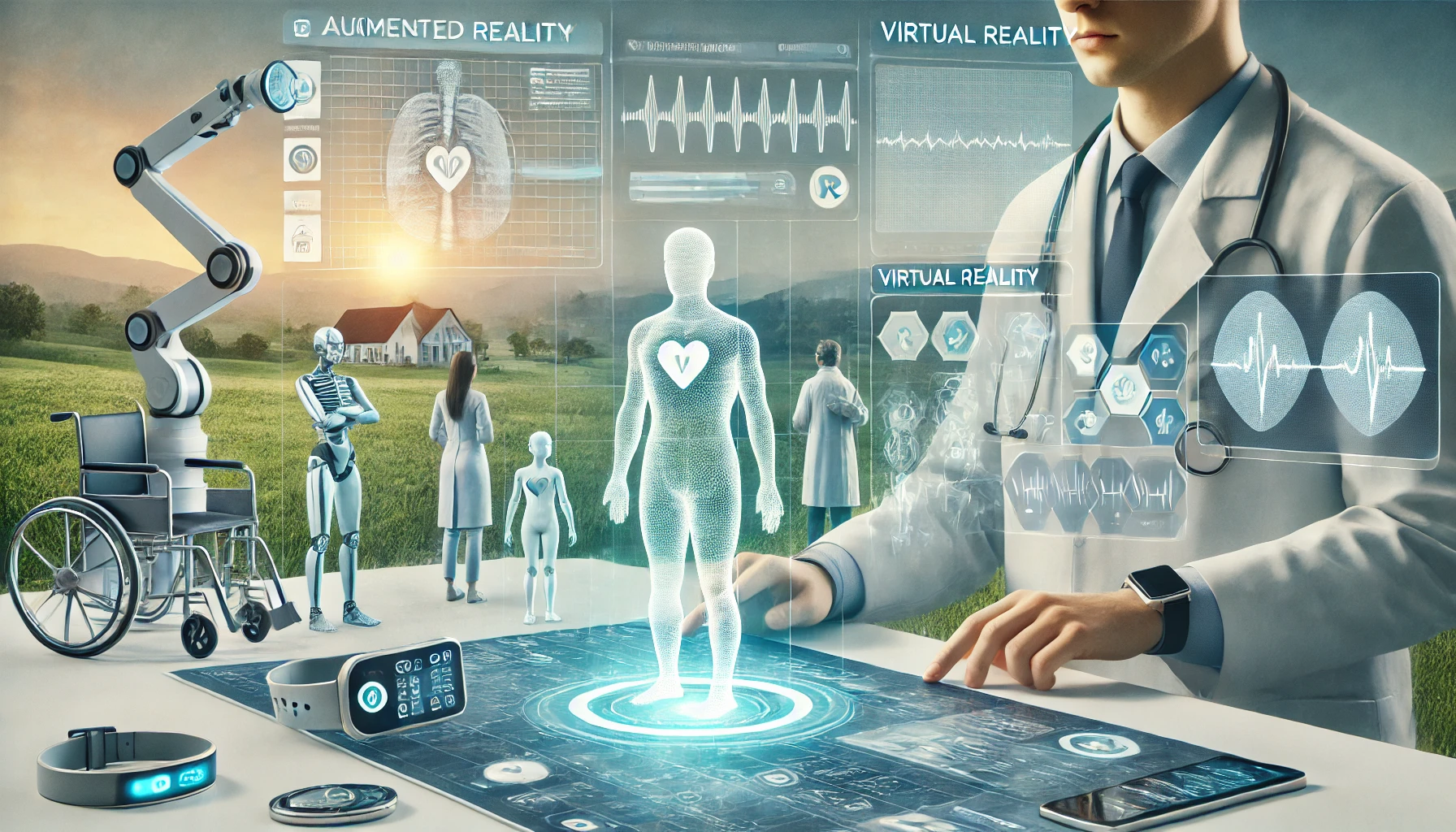The Future of Telemedicine: How Augmented and Virtual Reality Are Transforming Healthcare

Introduction: Telemedicine 2.0 – Beyond the Basic Video Call
Remember when telemedicine was just a doctor peering at you through a blurry webcam, trying to diagnose your ailment over shaky video? Well, those days are over! The future of telemedicine is here, and it's got a serious tech upgrade. Thanks to augmented reality (AR) and virtual reality (VR), the world of healthcare is getting a futuristic makeover, one that's improving not only the patient experience but also the doctor's ability to deliver care. It's like your doctor's office, only without the old magazines and awkward waiting room small talk.
From Video Consultations to Immersive Teleconsultations
Let's face it, video consultations were revolutionary – until they weren't. Sure, they saved us from traffic jams and sitting in germ-infested waiting rooms, but they also came with limitations. Enter AR and VR. These technologies are turning the typical teleconsultation into an immersive experience. Imagine a doctor being able to project a 3D model of your body, pointing out areas of concern, or even guiding you through a physical therapy routine in real time, all while you're lounging on your couch. It’s like having your very own 'medical hologram' that makes you feel like you’re in the doctor’s office without ever leaving home.
Telemedicine’s Superpower: Remote Surgeries
Now, here’s where things get really sci-fi. AR and VR aren’t just changing how we talk to our doctors – they’re changing how surgeries happen. Remote surgeries, where a doctor performs procedures on a patient from miles away, are becoming a reality thanks to these technologies. Picture this: a surgeon in New York uses VR to 'step into' a virtual operating room where a robot in London mirrors their every move. The possibilities? Endless. It means faster access to expert care, no matter where you are in the world – even if you're in the middle of nowhere, like a remote rural village or an off-shore oil rig.
Wearables: Your Health Data in Real Time
But the magic doesn’t stop there. Wearable devices, from smartwatches to health-monitoring rings, are collecting real-time data that AR and VR can integrate into telemedicine sessions. It’s no longer just about seeing your doctor through a screen – now your doctor can see inside you (no X-ray vision required). With these wearables sending your vitals, activity levels, and even sleep patterns to your physician in real time, healthcare is becoming proactive rather than reactive. It's like having a personal health assistant that’s on-call 24/7, tracking your well-being without interrupting your daily life.
How AR and VR Are Bridging the Gap in Rural Healthcare
For those in rural or underserved areas, getting quality healthcare can feel like climbing a mountain (literally and figuratively). That’s where AR and VR come in to save the day. These technologies can bridge the gap in access by allowing patients to receive advanced care without needing to travel long distances. Whether it’s a farmer in rural Kansas or a remote worker in Alaska, telemedicine is leveling the playing field. And it’s not just for routine checkups – advanced diagnostics and even mental health therapy can now happen virtually, bringing top-tier care to places that need it most.
Startups Revolutionizing Telemedicine
Some forward-thinking startups are already harnessing AR and VR to transform healthcare as we know it. Take Vori Health, for example. They’ve built a telemedicine platform focused on musculoskeletal care, allowing patients to connect with specialists from the comfort of their homes. Through VR-guided physical therapy, patients can perform exercises under a doctor’s watchful (virtual) eye, ensuring they’re doing everything correctly. Meanwhile, companies like XRHealth are using virtual reality to provide pain management and rehabilitation therapy. These startups are just the tip of the iceberg, showing us that telemedicine's future is incredibly bright – and super immersive.
The Road Ahead: Challenges and Opportunities
Of course, no futuristic healthcare revolution comes without its challenges. Integrating AR and VR into telemedicine requires reliable high-speed internet (something that’s not always available in remote areas), robust data security measures, and user-friendly interfaces for both doctors and patients. However, the opportunities far outweigh the hurdles. As internet infrastructure improves and costs decrease, we can expect these technologies to become more widespread, making healthcare more accessible and personalized than ever before. Imagine a world where a routine doctor's appointment feels more like a virtual game than a clinical visit – and all your medical data is stored securely in the cloud, ready to be analyzed by AI. The future of healthcare is closer than we think!
Conclusion: Is Telemedicine the Future of Healthcare?
Telemedicine is no longer the future – it’s the present, and with the addition of AR and VR, it’s only going to get better. The potential to improve healthcare accessibility, enhance patient experiences, and even perform remote surgeries is within reach. As startups continue to innovate, and technology becomes more integrated into our everyday lives, telemedicine is poised to change the way we think about healthcare forever. So, what do you think? Will AR and VR become your next healthcare providers?



